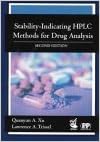Overview of Stability Testing
Stability testing methods are designed to assess how the quality of a drug substance or drug product varies with time under the influence of environmental factors such as temperature, humidity, and light. The goal is to determine the shelf life and recommended storage conditions for pharmaceutical products.
Types of Stability Testing
There are several key types of stability testing, each serving specific regulatory and scientific purposes:
- Real-Time Stability Testing: Involves storing the product at recommended storage conditions and testing it at regular intervals. This method provides the most accurate data on how a product will perform under expected conditions.
- Accelerated Stability
Common Analytical Techniques Used in Stability Testing
Analytical methods must be appropriately validated to ensure reliability of the stability testing outcomes. Commonly used techniques include:
- High-Performance Liquid Chromatography (HPLC): Widely used for quantifying and monitoring chemical stability, particularly in identifying degradation products.
- Gas Chromatography (GC): Essential for volatile substances and for studying thermal degradation.
- Mass Spectrometry (MS): Often coupled with chromatography techniques to identify molecular weights and structures of degradation products.
- Spectroscopy (UV, IR, NMR): Utilized for assessing various aspects of physical and chemical stability.
- Differential Scanning Calorimetry (DSC): Used to study the thermal behaviors and purity of drug substances.
Regulatory and Documentation Aspects
Stability testing must comply with international and national regulatory guidelines to ensure data integrity and acceptance for drug approval:
- ICH Guidelines: Products marketed internationally must adhere to the stability guidelines issued by the International Council for Harmonisation, particularly ICH Q1A-R2 for stability testing.
- Documentation: Comprehensive documentation is crucial, detailing the storage conditions, test methods, testing schedule, and stability results. These documents support regulatory submissions and quality assurance processes.
Conclusion
Effective stability testing ensures that pharmaceutical products are safe and effective throughout their shelf life, providing essential data to support regulatory submissions and product labeling. These methods are a critical part of the drug development and quality assurance processes.
